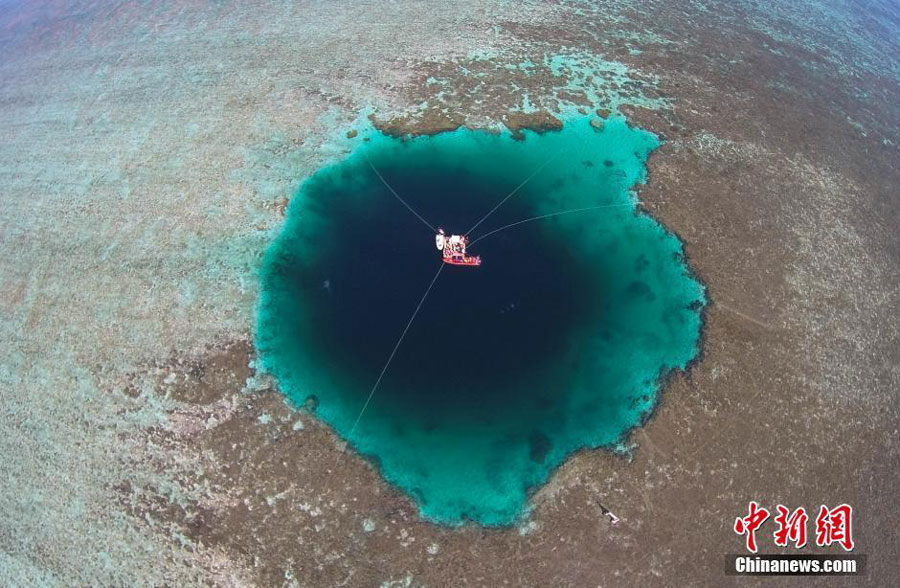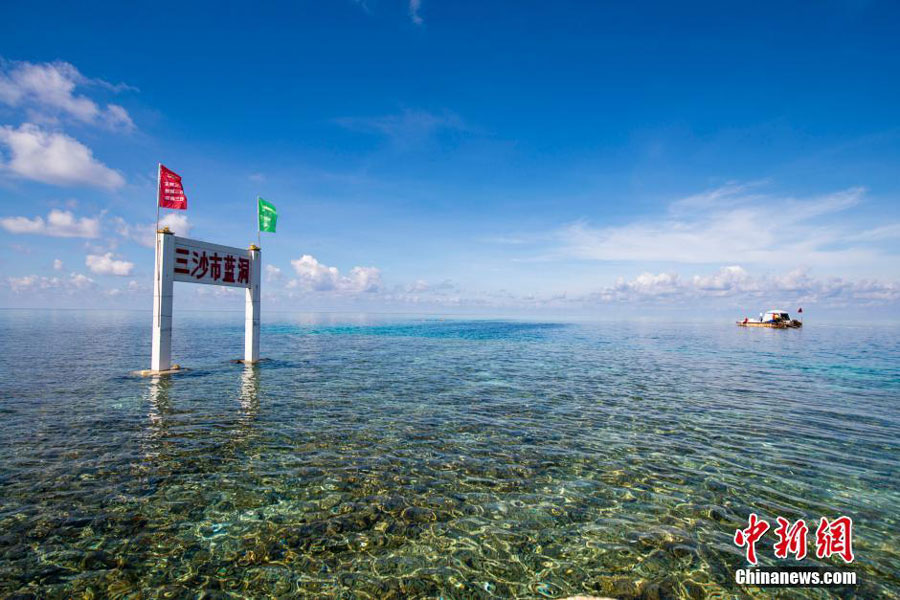Full coverage: The South China Sea Issue

An aerial photo taken on July 24, 2016 shows the "Sansha Yongle Blue Hole", which was officially named by the Sansha municipal government on Sunday, in Yongle, a major coral reef in the Xisha Islands. It was confirmed on Friday by Chinese researchers that it is the world's deepest underwater sinkhole. Located at 16.31 degrees north latitude and 111.46 degrees east longitude in Yongle, the "Sansha Yongle Blue Hole" is 300.89 meters deep, surpassing the current record of 202 meters. It was traditionally known as the "Dragon Hole" and called the "eye" of the South China Sea by locals. [Photo: Chinanews.com/Luo Yunfei]

A photo taken on July 24, 2016 shows distant view of the "Sansha Yongle Blue Hole", which was officially named by the Sansha municipal government on Sunday, in Yongle, a major coral reef in the Xisha Islands. It was confirmed on Friday by Chinese researchers that it is the world's deepest underwater sinkhole. Located at 16.31 degrees north latitude and 111.46 degrees east longitude in Yongle, the "Sansha Yongle Blue Hole" is 300.89 meters deep, surpassing the current record of 202 meters. It was traditionally known as the "Dragon Hole" and called the "eye" of the South China Sea by locals. [Photo: Chinanews.com/Luo Yunfei]















